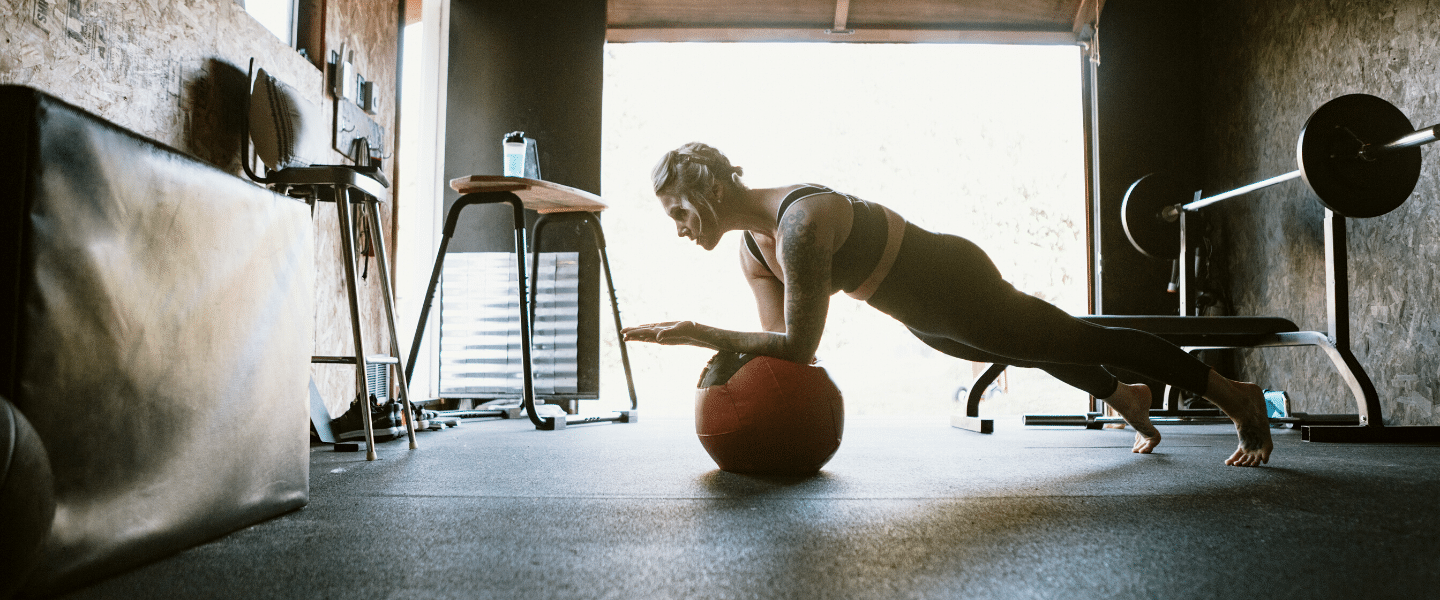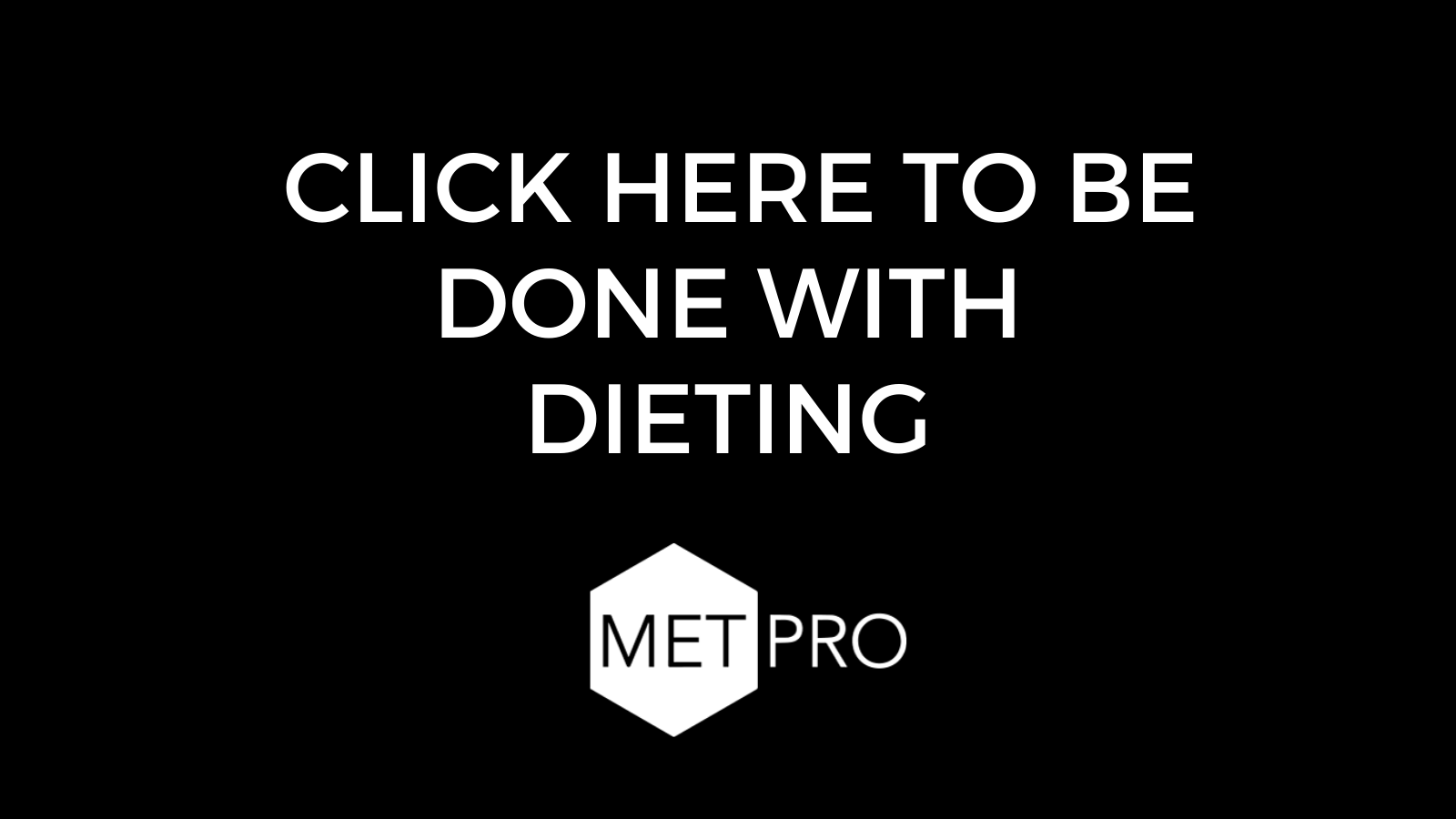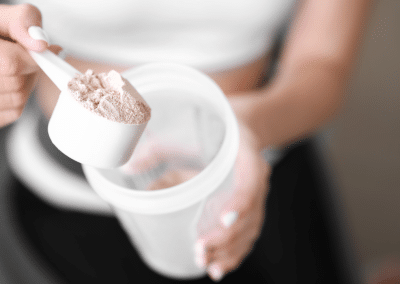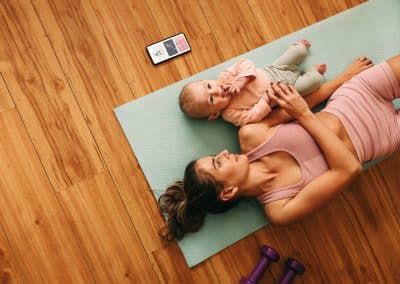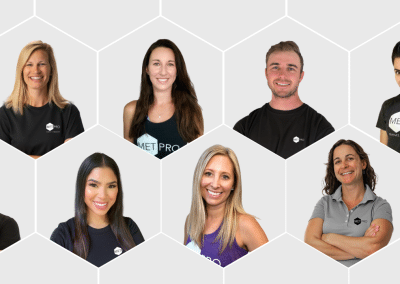In this episode, I am joined by Angelo Poli and we are discussing the best methods to create a home gym. Angelo is an internationally recognized expert in the field of body transformations and the Founder of MetPro. Thank you so much for joining me, Angelo.
Thank you for having me here, Crystal.
I wanted to talk to you about home gyms. Think of me as a beginner. I've never worked out before. I just joined MetPro. I want to start working out and I want to keep it simple and inexpensive. What is the best way to build out my home gym?
I get asked this at least three times a week. Where is the best place to start? As you and I have chatted many times over the last few years, the answer is always, it depends. Only this time, the answer is a little bit more pragmatic and you'll want to look at some simple factors such as how much space do you have?
Can you put something? Do you have an area? I have someone who's like, "I have all this space. I can build this whole gym out in my basement.” “Where do you live?” “I live in the Arctic Tundra where it's 10 below 0. I would never be able to survive exercising down there.” It has to be a balance of where you're going to be doing your exercise and how much space you have.
Here are some simple space-saving techniques. A lot of people think they need a bunch of equipment and don't get me wrong. I'm a big equipment nerd. I love all the latest gadgets and all the latest tools but when it comes down to if you're getting started, what I want you to do is move. In fact, there's quite a bit of exercise you can do just with your own body weight.
Lots of programs can give you examples. In fact, in the MetPro app, we have examples of, "If I'm traveling or if I'm at home and have no access to equipment, I can still do an upper body, lower body, or full-body workout with my own body weight.” It does make it nice when you have a few tools. With no further ado, I would tend to start with a simple set of dumbbells.
We've probably heard it a lot. It can be very versatile. You can get the whole set where it's adjustable. You can get those in up to 20 to 25 pounds. You can get the ones up to 52 pounds but the truth is if you're a beginner, you probably a couple of sets of light dumbbells are going to suffice 8 or 10-pounds sets. Plus, then a 10 or a 15 and 20-pounds set.
If you have a couple of those weights, that's going to be versatile so you have some loads for basic movements. With that, you can basically do bodyweight simple movements where now you've added some load. You can also start working your extremities a little bit easier. You can do arms, shoulders, biceps, triceps, and underload, which are some simple dumbbells.
Now, another option is some simple bands. You can get some tubing or some bands in any local store. The reason that bands are great is that it helps you with movements that work your posterior chain. In other words, when you see a lot of those bootcamps in the park, those are great but typically, they're doing mostly anterior chain training. They are doing stuff that's overhead, pushups, or sit-ups. All of that's great.
What are we doing as far as a pulling motion? What are we doing for your back, laps, rhomboids, lower traps, or rear delts? Those are a little bit harder to reach areas if you don't have something you can pull. Some simple tubing or banding, you can wrap around a door handle or have a seat on a chair and you can do seated rows. You can anchor it high over a door and you can do angled rows in mutilating a lap pole. You can work your posterior chain. With some light dumbbells, you can do kneeling single-arm rows off a bench or off some steady surface that you know because it is not going to give out at you.
That's very inexpensive. A couple of sets of dumbbells or bands are a great starting place. Now, if you can spend just a little bit more, then now, you could use some tools like a bench. That would probably be my first go-to, then a set of straps. TRX is one brand. There are several brands that make travel straps that are called Suspension Training. That gives you lots of fairly inexpensive ways to travel light and still be able to work the entire body. I would say the most versatile piece of equipment would be a good bench.
Why is that?
A good bench will enable you to adjust the position of your body. When I used to teach advanced courses and mechanics, postural training, and resistance training for other coaches, the first thing I would challenge them to look at is not what muscle group is working but what position are you in. Pick the position first, then layer onto that. The range of motion in the muscle group and the load. With a bench, that enables us to now do a prone position or supine position, ideally, you get an adjustable bench, which gives you an inclined position.
That gives you all kinds of positional options to do pressing and pulling motions. It's also an anchor for countless lower body exercises, tricep exercises, and things that you can use a bench to anchor off of. It's a safety issue. If you have a solid bench, then I know you have a solid surface because I've seen some wonky setups with folding chairs. It's nice to have something that you can count on. Another option for people who say, "Angelo, I don't have room for a bench.”
You can do a lot of those similar positions with a Swiss ball or an exercise ball. Get a medium to large inflatable ball and you can sit on it like a chair. You can lie back on it at an angle as you would. For example, an incline press with dumbbells. You can lie over it as if prone or at an angle to do a row or pulling motion and lots of variations.
It also can help you with modifications on squats. It can help you with doing wall balls, wall squats, and all kinds of things that you might not think of as being quite that versatile. There are entire routines you can do just with an exercise ball. That's a great go-to as well. These are all inexpensive items. Now, the caution with the stability ball is that it's in the name. It's not stable. A bench is stable.
For beginner beginners, if you're worried about balance, stability, equilibrium, and that thing, I wouldn't start with the Swiss ball. I would opt for to see if you can get even a small batch but if you've had some experience with an exercise ball, that's a great starting point. Those would be some starting things that I would look at if you're trying to keep your budget. Whatever it is are under $100. If you're trying to get something that travels well, small, or you can take it with you, you've got straps, suspension straps, such as TRX, or bands. The ideal home setup is going to be a bench, dumbbells, and adding a ball to that. You have a nice little setup where you can do a lot of things.
All of those seem to be related. Is there anything you need for special equipment when you're starting with cardio?
Cardio is my wife's favorite and I will do it begrudgingly because I know I must. Cardio is so important. The beautiful thing about cardio is you can get it outside. The problem with outside is that you can't order the weather.
It can be cold, hot, raining, or slick. There are a lot of things.
That's why I always like my clients to have something that they can rely on. There's a lot of exercise equipment that you can get. Even some that aren't very expensive. You can get a home use treadmill that is inexpensive. You can get exercise bike. As soon as you start moving into things like ellipticals and similar, I like those also but if we're being honest, what I find is the quality of machines that you'll get at that level for the home youths bargain price aren't as good.
Assuming you're someone who is not of a size or intensity level that requires something heavy-duty, a simple home use treadmill that's inexpensive off and we'll check the box for people and work well. Almost as good as going to the gym and using a commercial treadmill. Try equipment first. If you have a friend, gym access, or you know of a place where you can hop on a few pieces, try some equipment to see, “Will I use a recumbent bike? Do I like an upright bike? Do I like a spin bike? Will I get myself on the treadmill in the morning?” Those are all great tools. Which one is the best is the one you'll do. That's what it comes down to.
Finding the tools that you like and as always, our clients talk to us as their coach and say, “Here's what I'm trying to achieve.” We'll look at what are your objectives. Based on your objective, we might want to focus on some cardio equipment first. Based on your objective and circumstance, you may want a couple of simple sets of dumbbells to do resistance training. That's probably the easiest way to enter into some cardio and resistance training activities.
I'm relieved because I thought when I said cardio, you were going to say burpees.
There is one more category. It’s funny you should say that. That's what I call the Part Cardio Workout. For example, we have a whole selection of exercise programs that were inspired by what can you do at the park for cardio? Burpees are definitely in it. At the park, you'll find a step, a park bench, or open grass in a field, and usually, something you could even lean up against. That gives you the tools right there to do a ton of activities. You can do wall sits, step-ups, lunges, single-leg or split squats, pushups, burpees, hip bridges off a bench, or pushups off a bench. We can go on and on.
There are so many things. I don't expect you to remember all these. I don't even remember all of them. That's why we have tools to remind us, “Here are different moves you can do with this apparatus and get creative.” I always recommend asking a coach if you can for some direction. That way, you can spend your time getting the most and the greatest return on your efforts. If you're a beginner, I'll tell you what I tell every one of my new clients that are not currently in an irregular exercise routine.
I don't care. I want you active and start. It's less important to me that you're doing an upright row with a barbell versus a band lateral raise. Whether you're doing a park bench squat, a ball squat at home, or using a press machine at the gym, that's less important to me. What's more important is consistency and frequency.
Focus on consistency, frequency, and routine first, then graduate into intensity and greater amounts of time. If somebody will give me ten minutes a day, I can build on that. If somebody goes to the gym and decides they're going to get run over by a truck and give it everything they've got for a two-hour bootcamp but aren't going to have a routine, that's going to enable them to go back to the next day and the next, we're not going to get anywhere with that. It's 1 step forward and 2 steps back.
Think about what you can do to have the tools you need to enable you to start a regular routine. If you say, “I can't exercise a half-hour a day.” Can you do five minutes a day? Can we wake up in the morning and say, “I'm going to do one lower body movement, ball squats, regular squats, step-ups, lunges, or burpees.” You name it. One movement for that includes the lower body. Can I do one movement? That is for my upper body, push-ups, band row pose, TRX rows, a single on rows off a bench, and press.
Can I do one exercise that's for my core? Crunches, planks, etc. Three movements. If you do that every day or every other day and get into a routine of following through, you're going to be amazed at how quickly an athletic foundation will be laid. Same thing with your aerobic activity. Maybe you're not ready to start sprinting or doing any aggressive exercise but can you walk the dog and go a full block?
Can you go around your block at home? Can you start doing that daily? Once you can go around your entire block, can you try twice? Build that foundation. Your body is incredible. It'll adapt and acclimate quicker than you think. You'll have a wonderful foundation to build on and you'll see great progress, just keep at it.
What I'm hearing from you is a lot less important the amount of money you spend on creating a home gym and a lot more important about creating the habit of exercise, regardless of what type of exercise you're doing.
Yes. Now, I know people who like to spend a lot of money on their home gym because they enjoy having top-of-the-line equipment. If that will motivate you, that's money well spent but it has to all equate to the end goal of, “Get me to a regular consistent routine.” Simple tools and inexpensive tools are a great starting place and conserve you well for a while.
That's wonderful. I feel like people are going to be in a great place to be able to start their home gym. Angelo, thank you so much for your time. This has been a lot of fun. That is all for the episode. If you readers out there want to learn more about this topic or about MetPro in general, please check us out at MetPro.co. You can find the MetPro Method wherever you find any of your podcasts. Please be sure to rate and review. I'm coach Crystal with MetPro and I'll see you in the next episode. Until then, remember consistency is key.

